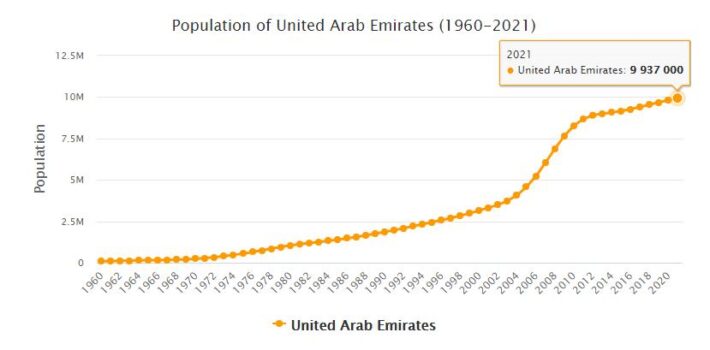Yearbook 2012
United Arab Emirates. The conflict with Iran over the sovereignty over an island group in the Strait of Hormuz has rekindled since Iran’s President Mahmoud Ahmadinejad and a group of Iranian parliamentarians visited the island of Abu Musa in April. Visitors declared that the island, as well as the adjacent Great and Little Tunb, was Iranian territory. The United Arab Emirates called home its ambassador from Tehran, canceled a scheduled football match between the countries and demanded that formal negotiations on the islands be initiated. At the same time as Iran’s military presence on the islands was reported to increase, forces from the Gulf States Cooperation Council (GCC), which includes the United Arab Emirates, conducted military exercises in the area.
- AbbreviationFinder.org: Provides most commonly used acronyms and abbreviations for United Arab Emirates. Also includes location map, major cities, and country overview.
One setback to freedom of speech in the country was the tightening of Internet legislation announced in November. It became illegal to damage the state or its institutions via the internet, disseminate information that could disrupt public order and express disdain for Islam and other religions. Anyone who violated the ban risked at least three years in prison. Since March, at least 60 oppositionists have been arrested. Some of them belonged to the Islamist Islamist movement, which the regime believed was part of a conspiracy against the state.
Population 2012
According to countryaah, the population of United Arab Emirates in 2012 was 9,262,789, ranking number 94 in the world. The population growth rate was 1.620% yearly, and the population density was 110.8002 people per km2.
United Arab Emirates Geopolitics
The United Arab Emirates (UAE) is a federation of seven emirates united in a single state entity and located in the Arabian / Persian Gulf. The strategic position, together with its economic-energy peculiarities, makes the UAE among the most important players in the area. Thanks to the immense oil resources, which make it one of the largest exporting countries in the world, the UAE are able to sustain high levels of growth and well-being, especially in consideration of the limited territorial extension, as also happens for Kuwait and Qatar. Moreover, thanks above all to the dynamism of the emirate of Dubai, the UAE has become the most important financial hub in the region. These factors make the UAE federation unique of stability and prosperity in the area. The UAE maintain friendly relations with almost all of their neighbors, as well as with the major Western and Asian powers. Despite disputes with Saudi Arabia and Iran over the territorial sovereignty of some islands in the Gulf – such as the small but strategic islands of Abu Musa and Grande and Piccola Tunb – the country is well integrated into major regional organizations, such as the Lega Araba and the Gulf Cooperation Council (GCC). Furthermore, although they are an established partner of the European Union and the US, they have a solid economic and commercial relationship with Iran. Just the relations with Iran they constitute a specificity compared to other Gulf countries, which in general have more tense relations with the Islamic Republic. After the outbreak of the ‘Arab Springs’ in 2011, the country has been characterized by substantial stability within the regional context. However, the Emirates have experienced some internal tensions, caused by the difficult relationship between the central authorities and the local Muslim Brotherhood, represented by the Islamist party al-Islah. Between 2012 and 2013, ninety-four people were arrested on suspicion of preparing a coup aimed at bringing the Muslim Brotherhood to power. Seventy-four of them were then sentenced on 2 July 2013. A situation that was then exacerbated above all by the tensions all within the Gulf region between the monarchies of UAE, Saudi Arabia, Kuwait and Qatar due to the political and financial support provided by the latter to Islamist groups (such as the Egyptian Muslim Brotherhood and Hamas) and to the rampant militant jihadism in the region. Also as a consequence of this, the low profile and the role of guarantor of the pre-established Arab-Sunni balance exercised by the UAE, especially in Egypt and in Libya, are very similar to the diplomatic actions carried out by the Saudi ally in all the post-revolution crisis scenarios of 2011.
The Emirates became an independent state in 1971, simultaneously with Qatar and Bahrain, following the withdrawal of the United Kingdom. Initially the emirates that were part of the federal state were six, which became seven in 1972 with the entry of that of Ras al-Khaymah. The emirates are characterized by a high level of internal autonomy which weakens the central federal government. Political dynamics have an oligarchic nature. Power is largely centralized in the Supreme Council of Rulers, made up of the country’s seven emirs (who hold hereditary positions), who appoint the president and prime minister. The emirates of Abu Dhabi and Dubai, for reasons of territorial extension, demographic weight and economic importance, are the two most important. The president of the UAE is the Emir of Abu Dhabi, while the prime minister (and vice president) is that of Dubai. The legislative body is a unicameral parliament with purely consultative functions and made up of forty members, of which only half, and only since 2006, are directly elected. The remaining members are appointed instead by the individual emirs.
